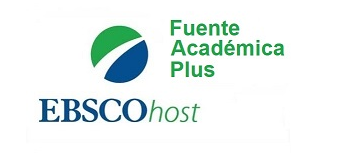Intervention of public space of the foundational center of the municipality of Circasia, Quindío, within the framework of the coffee cultural landscape
Keywords:
urban space, urban interventions, heritage, landscapeAbstract
This research includes the urban architectural analysis of the intervention of the public space in the main park of the municipality of Circasia, where different urban actions that respond mainly to tourism are evidenced. However, the results show intentions of heritage conservation in terms of preserving the dynamics of public space and the identity of the municipality. It is framed in the context of the Coffee Cultural Landscape, not only because of the territorial delimitation but also because of the impact of the patrimonialization in the urban context, considering the highlighted values, but also the great use as a tourist project by the departmental development plan. In this aspect, some of the municipalities have taken as an approach the improvement of their public spaces as conservation and economic development strategies.
Downloads
References
Alcaldia de Circasia. Consejo Municipal. (2016). Acuerdo No. 12, por medio del cual se adopta el plan de desarrollo 2016-2019 para volver a creer, del 24 de mayo 24 de 2016. https://www.circasia-quindio.gov.co/NuestraAlcaldia/DocumentosConcejo/ACUERDO%20No.012%20PLAN%20DE%20DESARROLLO%202016-2019.pdf
Arzoz, M. (2015, Junio 22). Imaginarios urbanos. Arquine. https://arquine.com/imaginarios-urbanos/
Augé, M. (1992). Los “no lugares” espacios del anonimato. Una antropología de la sobremodernidad. Gedisa.
Borja, J. (2000). Ciudad y ciudadanía. Dos notas. Instituto de Ciencias Políticas y Sociales. https://www.corteidh.or.cr/tablas/15078.pdf
Borja, J. y Muxí, Z. (2001). Centros y espacios públicos como oportunidades. Perfiles Latinoamericanos, 9(19), 115–130. https://perfilesla.flacso.edu.mx/index.php/perfilesla/article/view/318
Frick, D. (2011). Una teoría del urbanismo. Ulibros.
Gamero, M. (2009). La contemplación del mundo en la sociedad contemporánea en base a la construcción de inmaginarios sociales. Tonos Digital, (14), 1–6. http://www.tonosdigital.es/ojs/index.php/tonos/article/view/140
Gamboa, P. (1999). El proyecto del espacio público. Bitácora Urbano Territorial, 3(1), 23–26. https://revistas.unal.edu.co/index.php/bitacora/article/view/18827
García, N. (1999). Imaginarios urbanos. EUDEBA.
Gómez, A. (2015). Modelo de Diseño para la valoración y apropiación social del Patrimonio en El Paisaje Cultural Cafetero Colombiano. KEPES, 12(11), 117–138. https://doi.org/10.17151/kepes.2015.12.11.7
Heidegger, M. (1951). Construir, Habitar, Pensar. https://www.fadu.edu.uy/estetica-diseno-ii/files/2013/05/Heidegger-Construir-Habitar-Pensar1.pdf
Isaza, J. (2012). Paisaje Cultural Cafetero de Colombia: un paisaje cultural productivo, vivo y sustentable. UNESCO. https://unesdoc.unesco.org/ark:/48223/pf0000218205_spa
Redacción La Crónica. (2019, febrero 25). 6,1% ha aumentado flujo de turistas extranjeros en Quíndio en los últimos años. Nueva Crónica del Quíndio. https://www.cronicadelquindio.com/noticias/economia/61-ha-aumentado-flujo-de-turistas-extranjeros-en-quindo-en-los-ltimos-tres-aos
República de Colombia. Conpes. (2014). Documento Conpes 3803, Política para la preservación del Paisaje Cultural Cafetero de Colombia, de Febrero 13 de 2014. https://colaboracion.dnp.gov.co/CDT/Conpes/Econ%C3%B3micos/3803.pdf
Rojas, A. (1998). El espacio publico en la Ciudad Colombiana: un modelo para armar. Revista Bitacora Urbano Territorial, 2(1), 1–9. https://revistas.unal.edu.co/index.php/bitacora/article/view/18841
Weisman, A. (2002). Intervenciones urbanas: acerca del Proyecto Urbano. Urbano, 5(6), 62–67. https://revistas.ubiobio.cl/index.php/RU/article/view/603

Published
How to Cite
Issue
Section
License
Copyright (c) 2022 Diana Marcela Cifuentes Monsalve, Jhon Fredy Tintinago Montero , Jorge Manuel Valencia Patiño

This work is licensed under a Creative Commons Attribution-NonCommercial-NoDerivatives 4.0 International License.
CC Reconocimiento-NoComercial-SinObrasDerivadas 4.0


 English
English
 Español (España)
Español (España)






